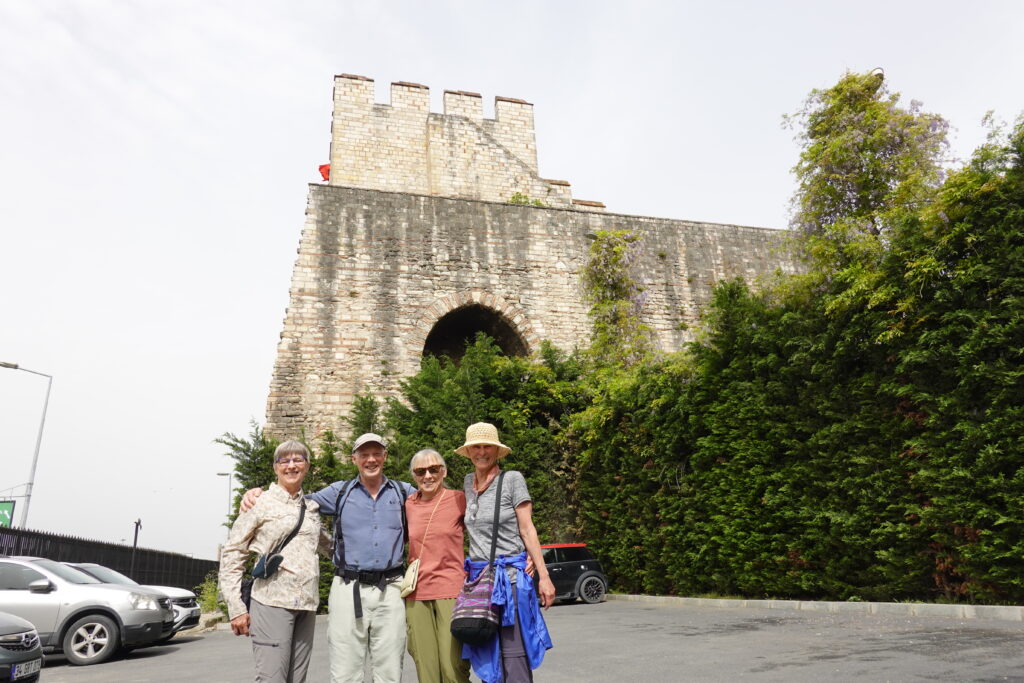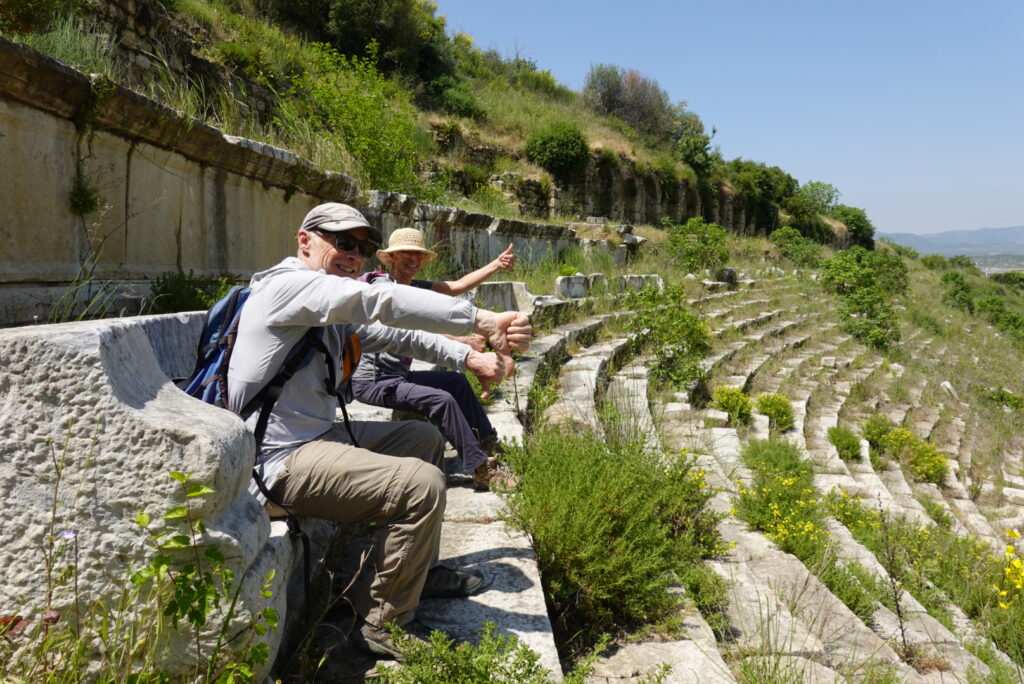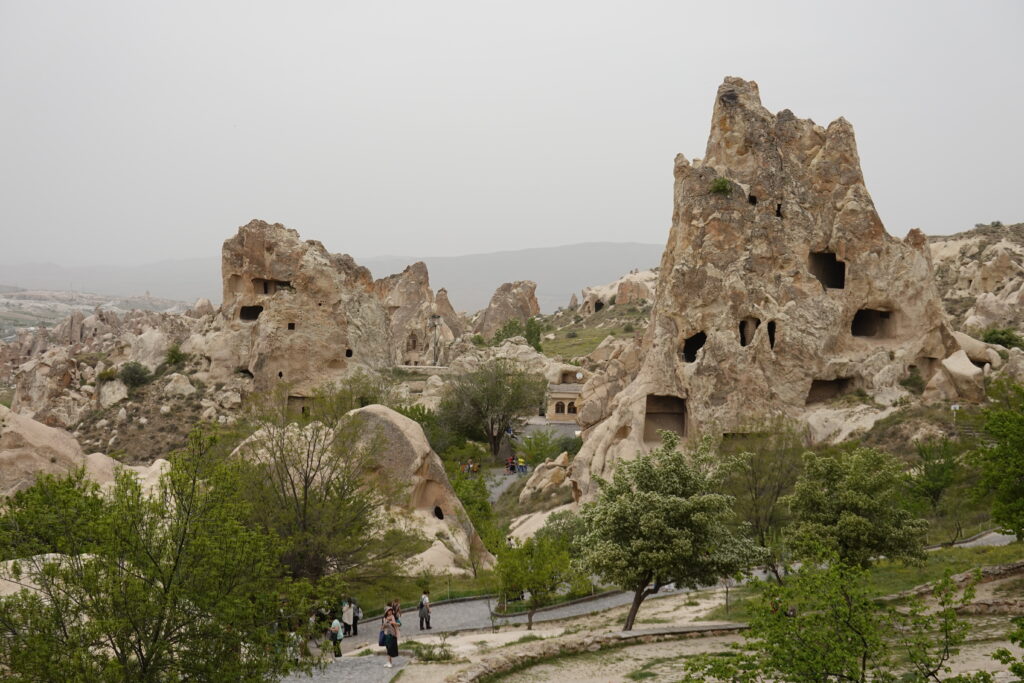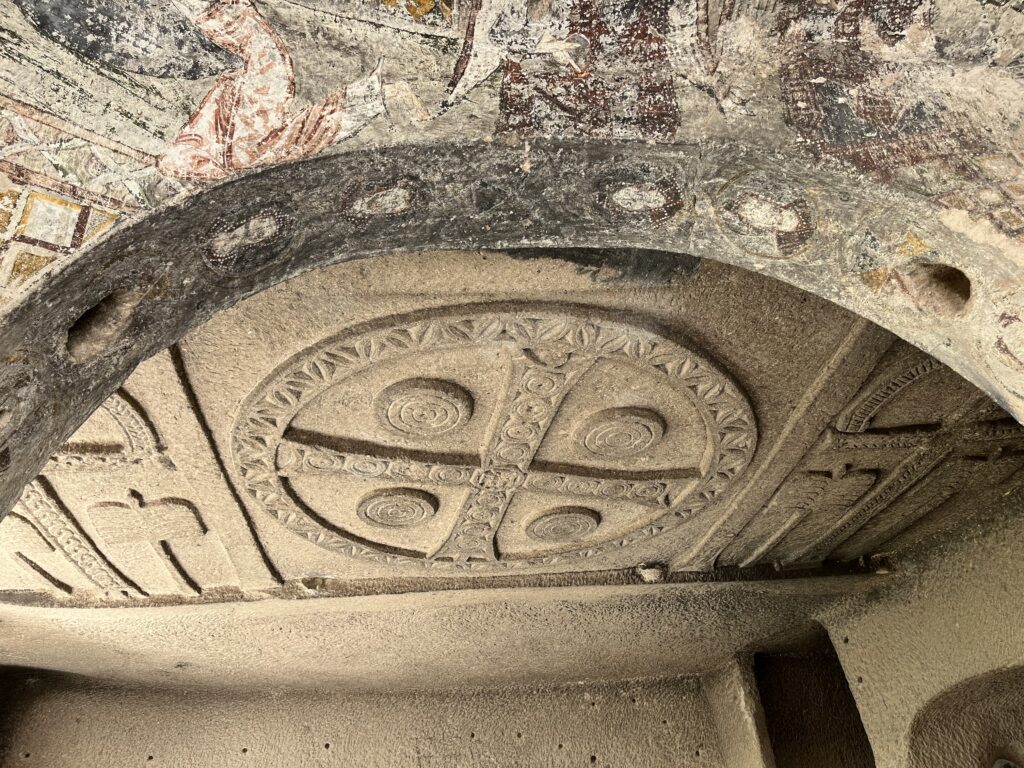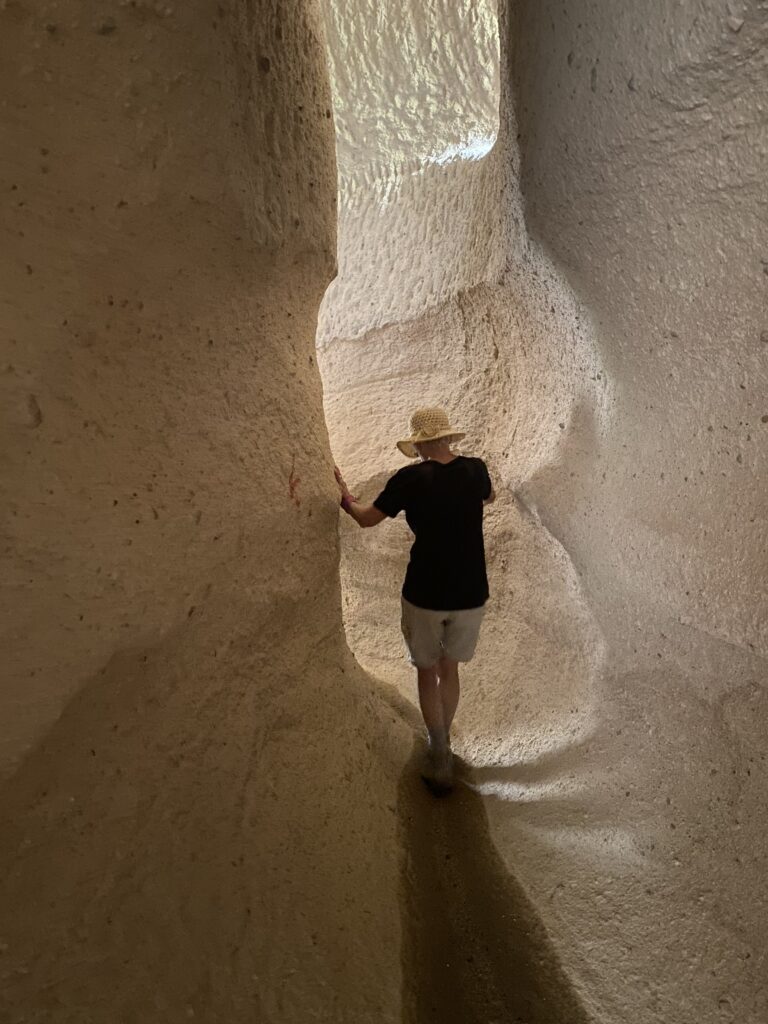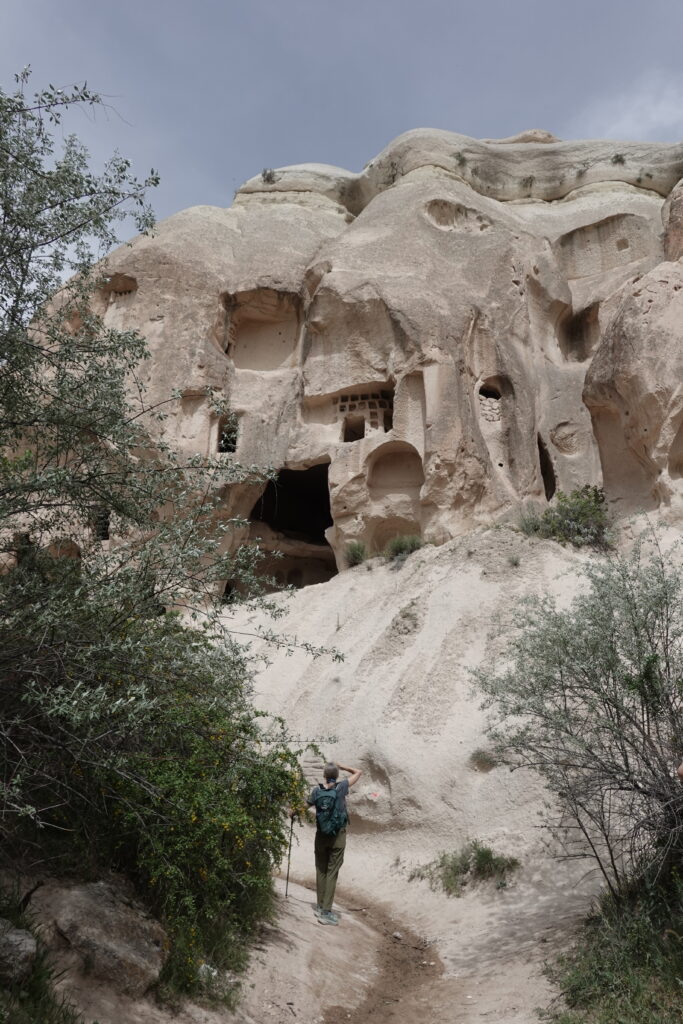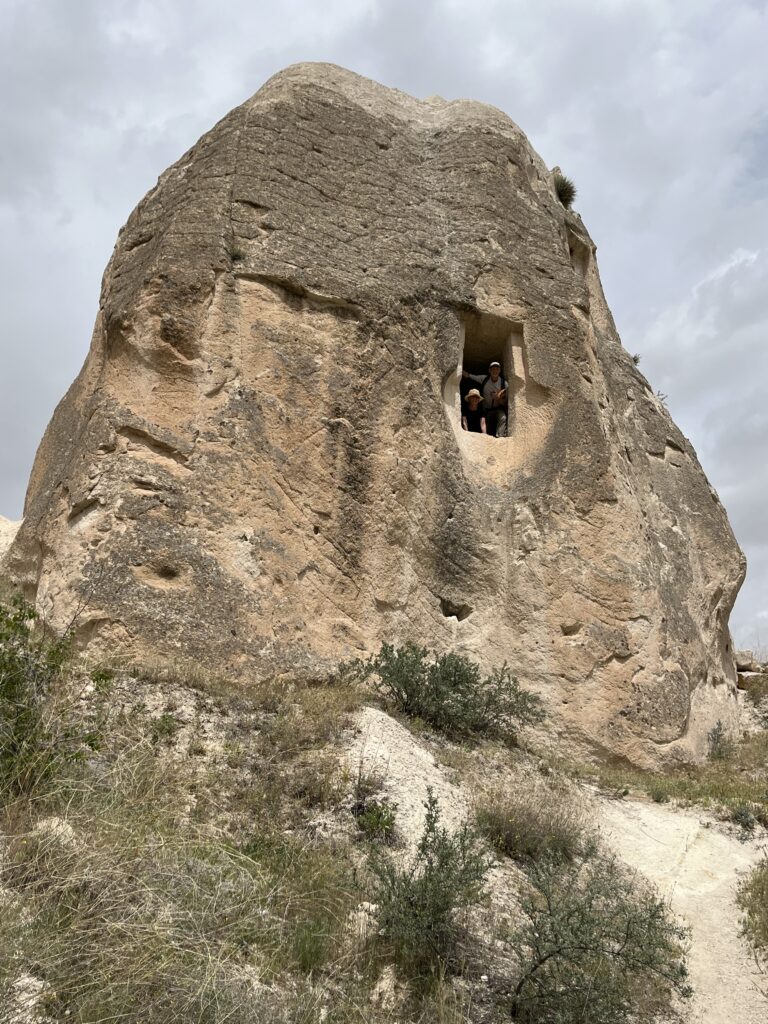I find Turkey’s long history fascinating. Anatolia has been home to many civilizations over thousands of years. At the museums we visited, we saw relics and carvings dating as far back as 6,000 BC. The oldest known human-made structure is in Turkey. Göbekli Tepe, in southeastern Turkey (which we did not see), is a temple dating to circa 10,000 BC!
Those dates are mind-boggling. The oldest structures I have seen in the United States were built by the Ancestral Pueblo (Anasazi) in the 12th century AD. Thousands of years before that, people were building temples and creating sophisticated sculptures in Anatolia.
We visited several fascinating sites from ancient Anatolia.
Walls of Constantinople
Our first encounter with ancient Turkey was the Walls of Constantinople. The Romans built these walls when the Emperor Constantine moved the capital of the Roman Empire from Rome to Constantinople (now Istanbul) in 330 AD. The walls saved the city during sieges from foreign invaders for more than a thousand years. The Ottomans finally conquered the city in 1453.
We took a tram from central Istanbul to find the walls and walked along a well-preserved section. Along with inner and outer walls, both many feet thick, we found numerous towers and a depression that must have once been a moat. We also found parks and cafes next to the wall, with people relaxing on benches and drinking Turkish tea.
Ephesus
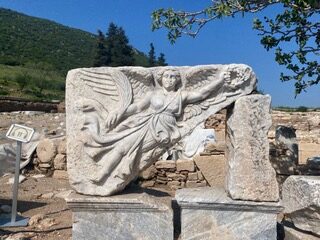
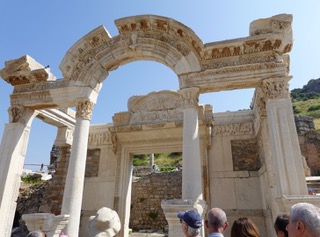
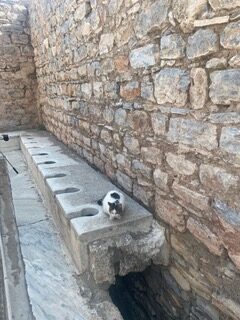
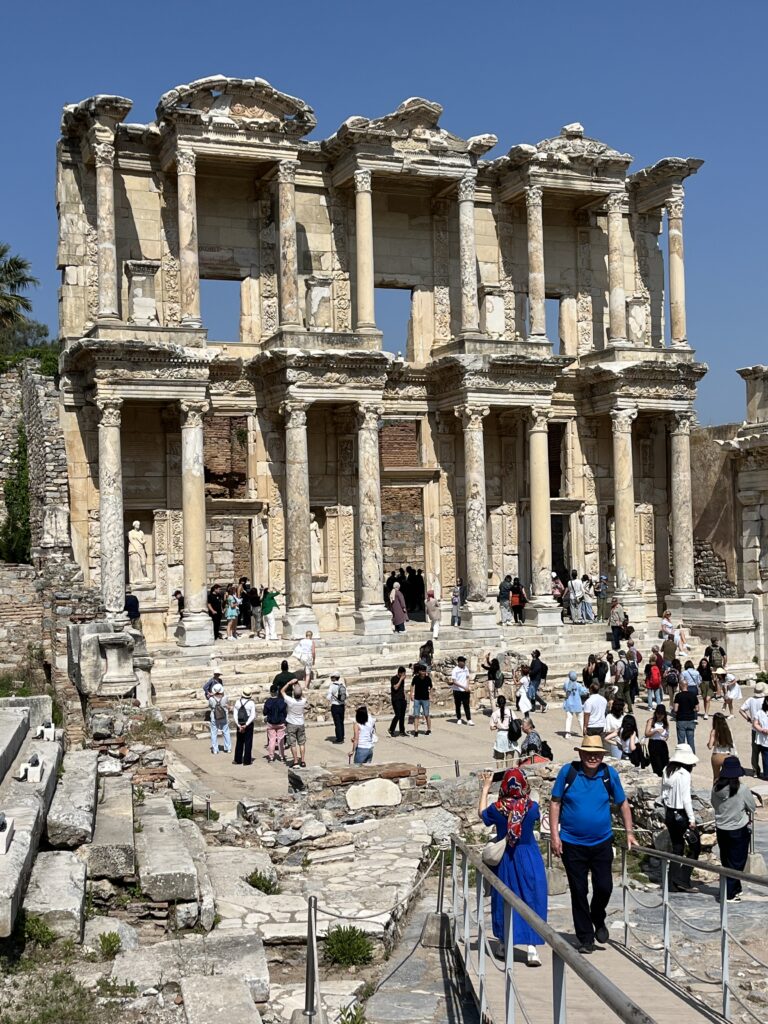
Most people who travel to Turkey visit Ephesus, and for good reason. “Ephesus is one of the largest and most impressive ancient cities in the world,” said goturkiye.com. The city was most prominent during the Roman Empire. We visited the site with a guide so we could learn more about the city and its history. He told us that at its height 250,000 people lived in Ephesus.
Ephesus was an important site in early Christian history. Do you remember St. Paul’s letter to the Ephesians? That’s Ephesus. St. Paul wrote his First Letter to the Corinthians, and St. John is said to have written his gospels, there. Some believe that Mary, mother of Jesus, spent her last years in Ephesus. Mary’s home is a pilgrimage site (although not for us non-believers).
The most magnificent building in Ephesus is the Library of Celsus, with its high arched walls. The ancient city also holds the remnants of an agora, public toilet, homes, columns, temples and carvings.
Ephesus is an amazing and beautiful place. But the hordes of other tourists, pushing forward for the best selfie, detracted from the experience.
I was more intrigued by the other ancient sites we visited, where we were alone or with much smaller crowds. It was more of an adventure to discover these sites.
Magnesia
Looking for a site to see near Ephesus, we followed a hotel staff recommendation to visit Magnesia. We had never heard of it, and it doesn’t appear in the Lonely Planet Turkey guidebook. We took a bus and then walked for a while along a highway (not very aesthetic; we took the bus back).
Magnesia includes several well-preserved ruins, including a large temple to Artemis and a theater. The most impressive was the stadium. Built in the 1st century AD, in its day it seated 30,000 spectators. “It was the venue for running competitions, horse races, boxing fights and, in the Roman Empire, possibly gladiator games in honor of the Emperor and the city goddess Artemis,” said tuerkei-antik.
We were the only people in the stadium when we arrived. We walked up the stone aisles to the top row, where we had fun visualizing the spectators, races and games. We posed as statues and cast judgment on the imagined gladiators.
Cappadocia
Cappadocia is a strange and wonderful place, with fairy chimneys and other volcanic rock formations where people carved out churches, homes and even a castle from the soft rock, mainly tuff. The Christians also built underground cities in the 4thcentury to more easily hide from the Romans. Some of the cities were 12 stories deep and could house 20,000 people. The Romans stopped attacking the Christians after the Emperor Constantine converted to Christianity in AD 313.
The first day we hired a guide to visit some of the sites and learn more about this fascinating place. These were all tourist sites, with gates, vendors, admission fees and crowds.
The second day we did a scenic loop hike through the Red and Rose Valleys, climbing up into several homes and small churches carved into the rock. It was fun for our small group to encounter the sites and imagine we were the only ones to visit. I later found photos of the best church on the web, so it is clear we weren’t the first to discover it.
Hierapolis and Pamukkale
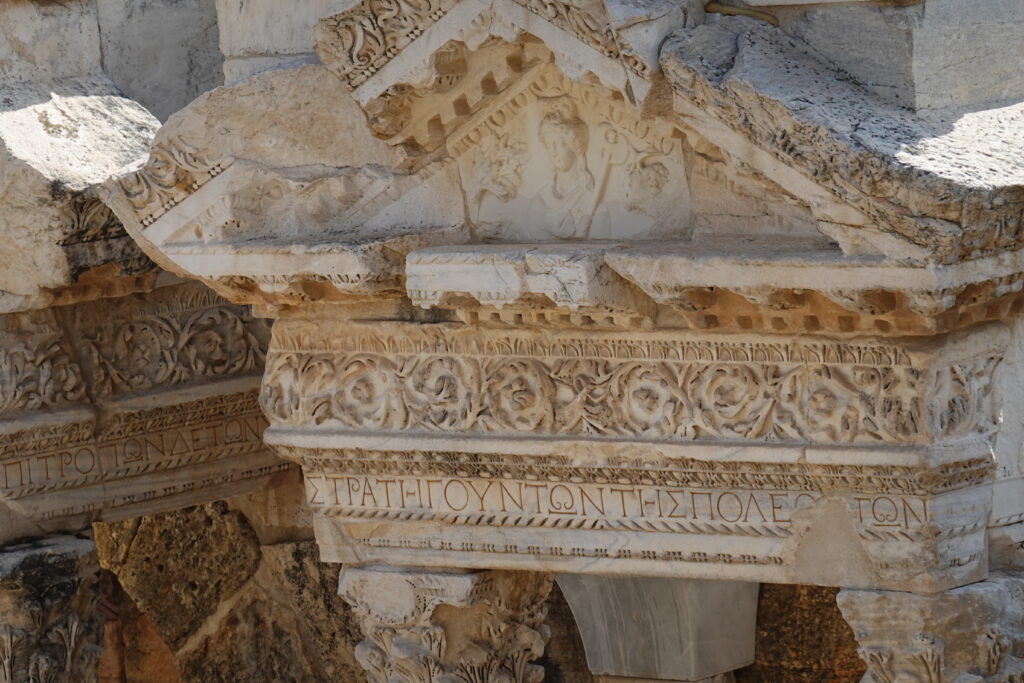
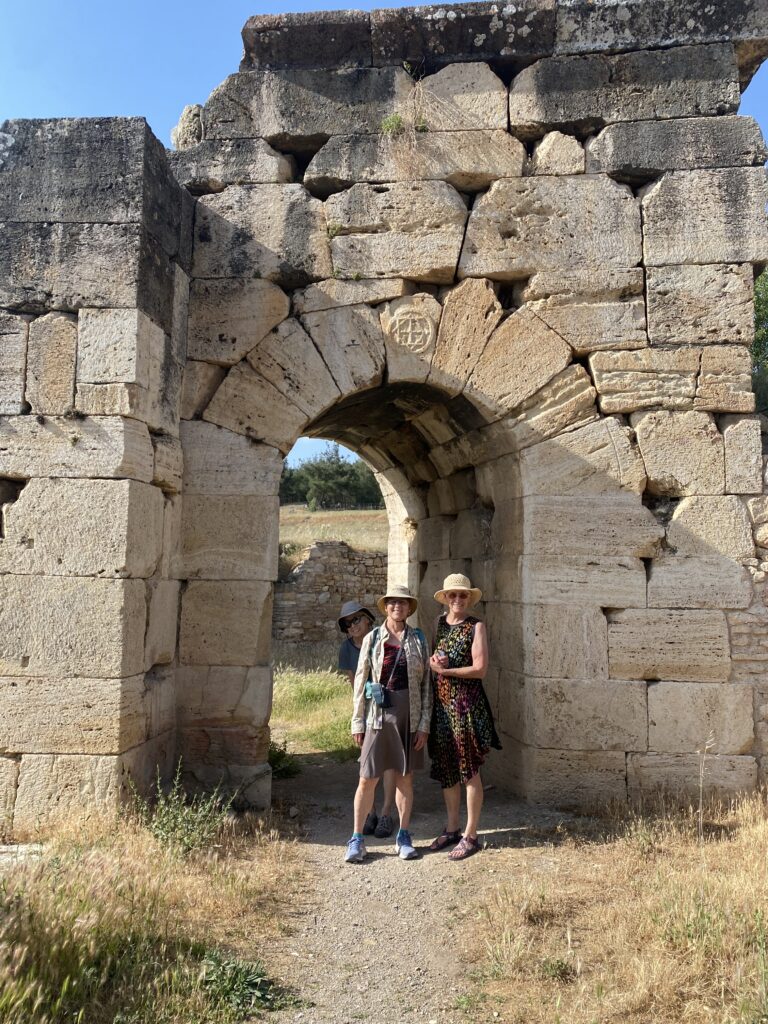
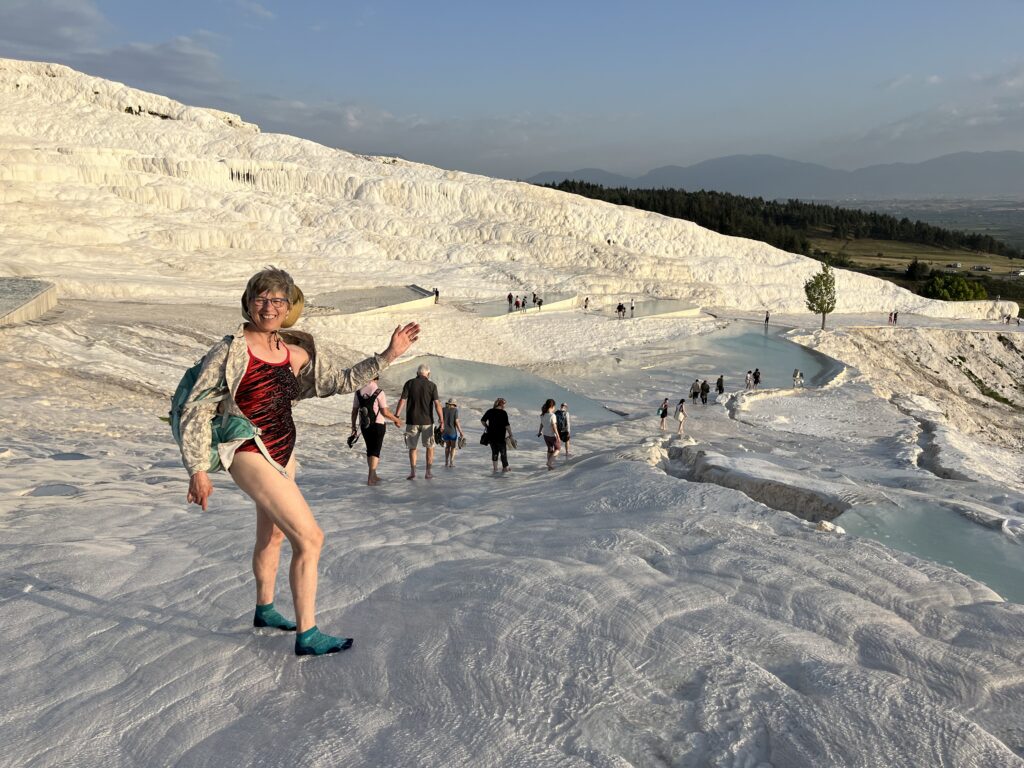
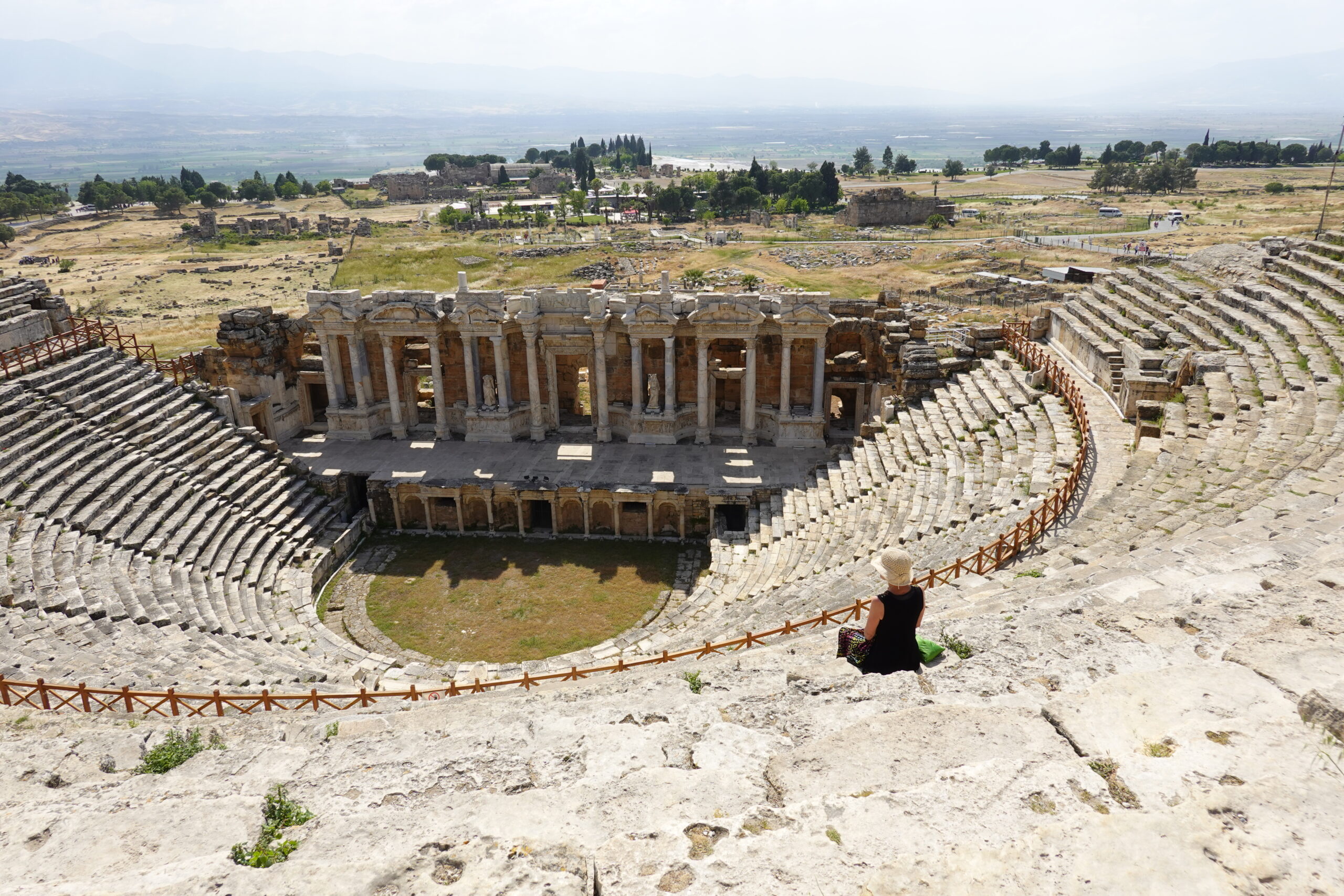
Our next ancient site was Hierapolis. It was famous for its hot springs, Pamukkale, which have been used as a spa since at least the 2nd century BC. Beyond the city gate is a necropolis, or graveyard, with over 1200 tombs. People visited for the healing waters of the spa, and many retired or died there. Marcus Aurelius is buried at Hierapolis.
While we were certainly not alone in Hierapolis, it was much less crowded than Ephesus. Part of the reason may be that the site is quite spread out. To see it involved a lot more walking than the average tourist (especially American tourist) is willing to do.
The most stunning structure is the theater, which has gorgeous architecture and friezes. It would have seated 10,000 people at its peak, said Turkey Travel Planner. The beautiful stage is the result of the Italian Archaeological Mission, which has been working on the site since 1957. The Italians pieced together the original stone with modern stabilizers and replicas of the original sculptures.
St. Philip the Apostle is said to have been martyred in Hierapolis in the year 80 AD. We climbed up the hill and then a stone staircase to visit St. Philip’s tomb and church, where we encountered a group of Italians on a religious pilgrimage. While they prayed, I walked through the eight arches of the church’s chapels and imagined myself as a pilgrim in an earlier age.
From Hierapolis, we joined the crowds wading barefoot downhill through Pamukkale’s cool water and shimmering, snow-white travertine terraces, next to brilliant turquoise pools. Partly smooth rock and partly ridged, it was a bit hard on my feet but a fun and unique experience. I saw travertine terraces in Yellowstone, but in the US we would never allow crowds to walk on them.
Museums
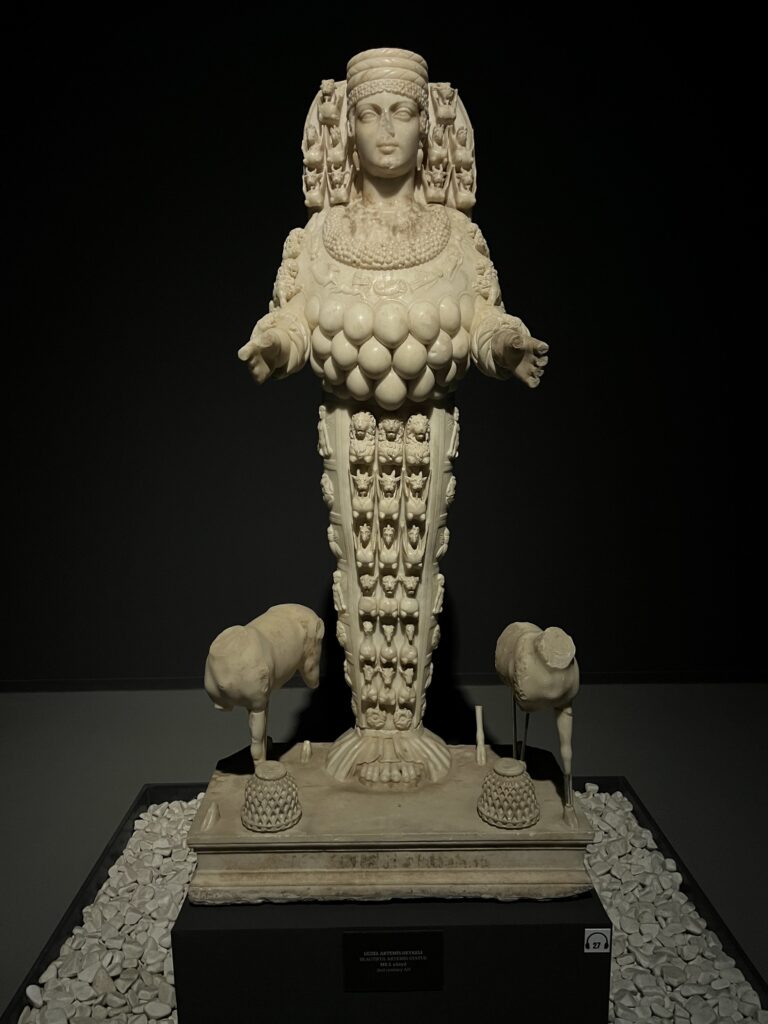
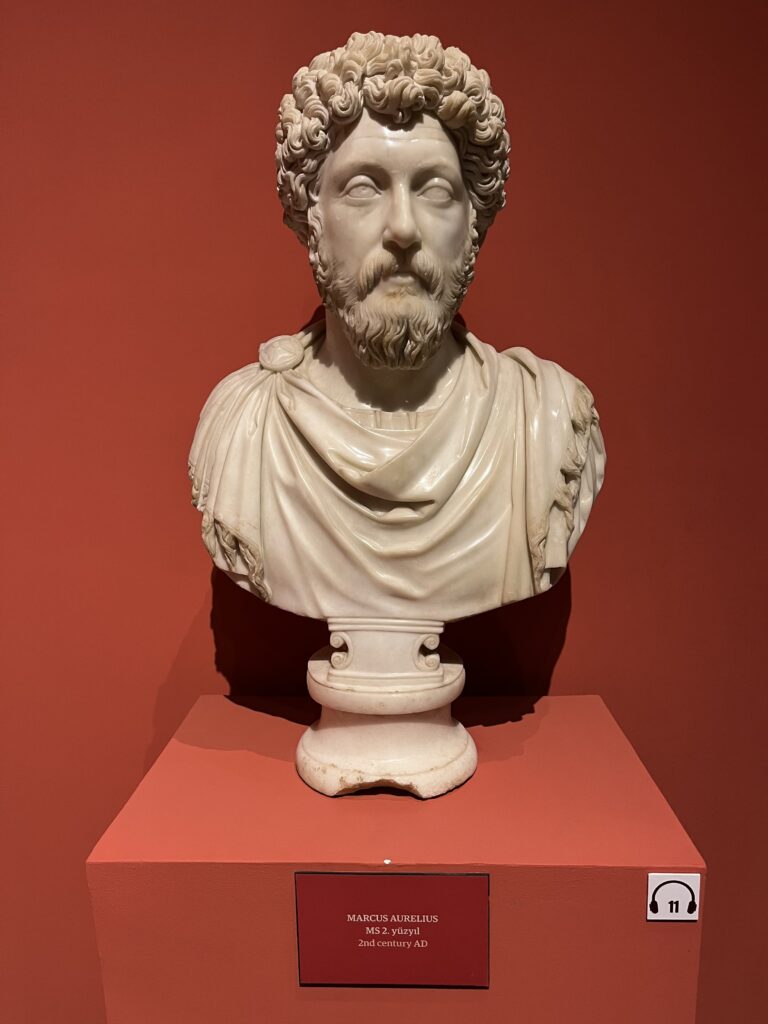
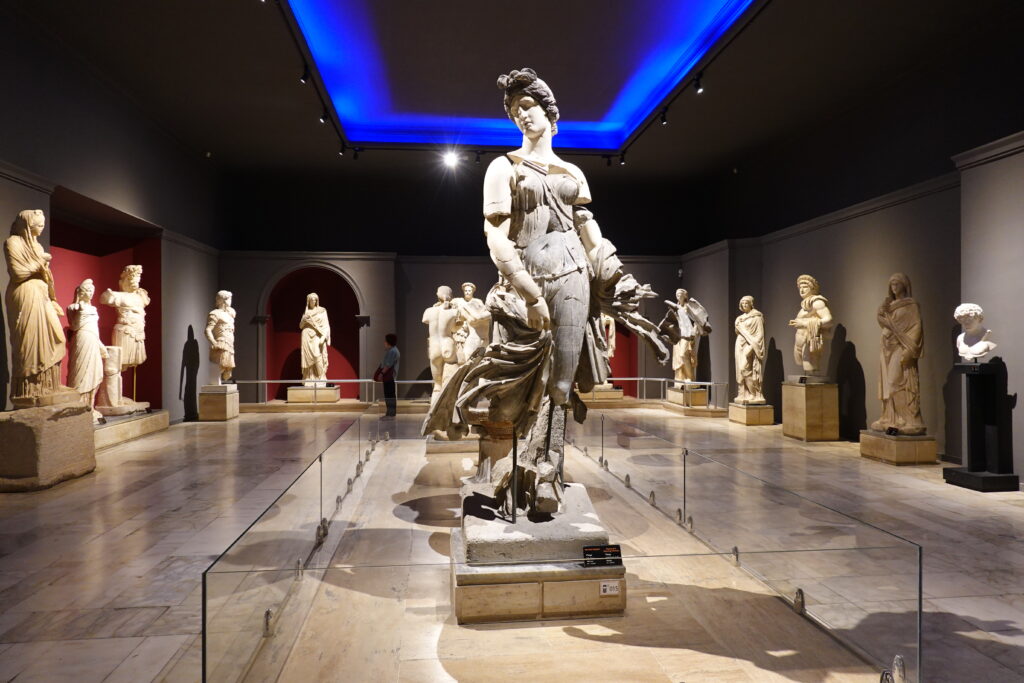
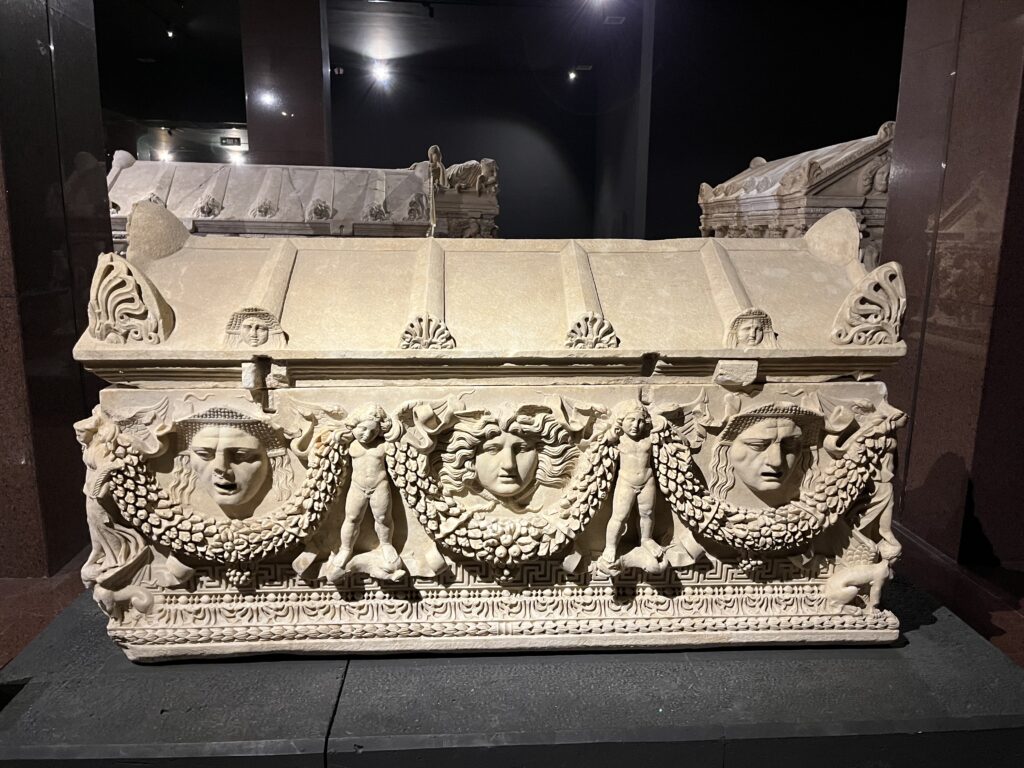
We visited archeological museums in Ephesus and Antalya. Here are a few more images of ancient Anatolia.
Patara
The last ancient site we visited was Patara, during our hike along the Lycian Way. I’ll write more about Patara in my post about hiking the Lycian Way.
Note about this blog
Years ago, in what seems like the dim dark past, I wrote an occasional blog post related to my work in environmental communications. Now I am living a different life, where I work a little and play a lot. I plan to write blog posts occasionally about my travels, film projects and other as-yet-undetermined topics.
The first set of blog posts is about my recent trip to Turkey. I visited Turkey from April 20-May 10, 2024, with long-time friends Rob and Sonya and Sonya’s friend Carey. See links to the first two posts below. I have plans to write about Turkish food, visiting a hamam (Turkish bath), buying a carpet, hiking the Lycian Way and maybe more.
